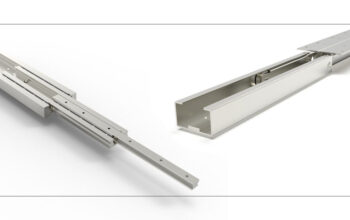Before we talk about the non-encumbrance certificate and its importance, it is important to know how home loans work. Home loans are secured in nature. The property bought with the loan money serves as collateral in the case of these loans. In other words, the property provides security to the lender for the loan.
Thus, as soon as the borrower pledges the property as collateral, the lender places an encumbrance or lien on the pledged property. While this encumbrance or lien does not stop the property owner from using the property however they like, it certainly stops them from selling the property.
Thus, once a borrower has repaid a home loan, one of the first things they must do is make sure to have the lien removed from the property. It is only when a borrower has no encumbrances against the property that, will they be able to avail of a loan against it or sell it.
What is the Non-Encumbrance Certificate?
One of the documents that lenders ask for when one applies for a home loan is the non-encumbrance certificate. Loan applicants must submit a non-encumbrance certificate while applying for a home loan.
When you decide to avail yourself of a home loan to buy a property, you must make sure the property has no encumbrances against it. This must be done to avoid future legal and financial trouble. Thus, all lenders ask for a non-encumbrance certificate. If the property has an encumbrance or lien against it, the Sub-Registrar’s office will release Form 15.
However, if the property does not have an encumbrance or lien against it, the Sub-Registrar’s office will release Form 16. The non-encumbrance certificate must contain the following details:
- Full details regarding the current and previous owners of the property that you plan to pledge as collateral.
- Every relevant detail related to your property, such as the address of the property, its location and size, etc.
- The non-encumbrance certificate must also contain details regarding all the transactions that happened related to the property.
- All information related to the release deed
Availing of the non-encumbrance certificate is quite easy. Here’s the process to be followed:
- Go to the official state government’s website and open the online encumbrance certificate form.
- Fill out the required form and pay the stamp duty charges. After this, submit the form after attaching all the required documents.
- After this, submit the form at the Tehsildar’s office and make sure to take the acknowledgement slip.
- The Tehsildar’s office will carry out a proper inspection of the property and release the non-encumbrance certificate within 2 to 3 days of receiving your request.
What is the Difference between Non-Encumbrance Certificate and No Objection Certificate?
Many people get confused between a non-encumbrance certificate and a No Objection Certificate or the NOC.
A non-encumbrance certificate is a legal document that gives details about any lien or encumbrances that a property may have against it. A NOC, on the other hand, serves as proof that the borrower has completely repaid the loan and therefore, the lender has no legal right over the property.
The borrower can sell the property or use it however they deem fit. Once the borrower has repaid the loan, the lender must release the no-objection certificate. However, if for some reason, the lender forgets to release the NOC letter, the borrower can request the same by writing a letter to the lender.
While one needs a non-encumbrance certificate to be considered eligible for a home loan, borrowers need the NOC certificate to establish that they have completely repaid the loan and therefore, the property belongs solely to them. In the absence of the home loan NOC, a borrower cannot sell the property they own.
Conclusion
If you are planning to apply for a home loan, make sure you have all the housing loan documents with you, including the non-encumbrance certificate. In the absence of all the required documents, availing yourself of a home loan can become quite challenging.
Further, know that meeting home loan eligibility requirements is crucial and so is securing the lowest home loan interest rates if you want to be able to repay your loan comfortably and without defaulting. Always keep both the non-encumbrance certificate and no-objection certificate ready with you as these documents will help you immensely in case of a legal trouble.




